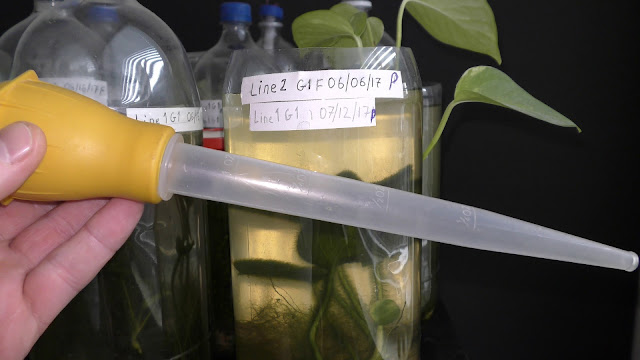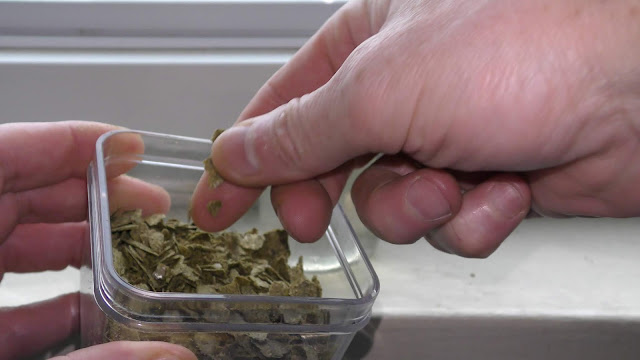I found them in the ponds of Central park of NYC while picking aquatic plants.
You can see them as moving dots.
Seed shrimp eat algae and remains of organic waste, helping keep aquariums clean.
I call them the cleaning crew :)
Seed shrimp can live and breed in this tube!
Check on it in my previous video test-tube experiment.
Any size jar can be used for breeding seed shrimp.
The larger the jar, the larger the seed shrimp population can grow.
I set up all my aquariums in the same way.
Put seed shrimp in a tank.
Add water from an old aquarium or dechlorinated tap water to the nursery.
I add a small pinch of homemade fish food flakes.
This amount of food should make seed shrimp happy for weeks, and it helps to boost algae growth ;)
Basically, we have made the simplest breeding nursery.
I add some gravel or rocks.
Seed shrimp seem to like driftwood.
And they love plants!
That is how I got them to begin with ;)
Here, I add growing underwater land moss.
Cover the nursery to reduce water evaporation.
I tried to feed seed shrimp with lettuce, cabbage, broccoli - any green leaves will do.
Seed shrimp feed on any organic debris.
Though, algae is their first choice.
So, let's get algae growing!
I add snails found in the same pond ;)
Waste produced by snails, fish, or any live creatures, provides the necessary nutrition for algae growth.
Seed shrimp and pond snails eat algae, providing waste for new algae to feed on.
And so it goes in a cycle.
This nursery is the simplest self-sustaining aquarium!
As the population of seed shrimp grows, you can move some of them to other aquariums.
I use a pipette to transfer seed shrimp.
I keep nurseries with seed shrimp and snails on a windowsill exposed to direct sunlight all year around.
Green algae is all they need.
Here are about 1-year-old seed shrimp nurseries in plastic cups.
This land moss seems to be dead, but looks good anyway ;)
Notice the amount of green residue accumulated on the bottom.
Those are remains of algae and seed shrimp waste.
This is a 2-week-old nursery.
And here are 2-year-old nurseries.
I don't add any food as long as there is algae.
Seed shrimp are the first critters I add to all my new aquariums.
The population of seed shrimp fluctuates in cycles, as with all other living organisms, following the same rules.
That's all it takes to breed seed shrimp.
I mix seed shrimp from different nurseries to maintain their genetic health.
It takes a couple of nurseries to do it.
Guppies, especially young guppies, eat seed shrimp.
Seed shrimp can hardly be seen in aquariums with young guppies.
Adult fish show less interest in less than bite sized seed shrimp.
They still may snap some seed shrimp occasionally - kind of a snack on the go :)
I let the population of seed shrimp grow in aquariums with pregnant guppies to ensure that newborn fry will have plenty of fresh food available.
Here, I mix seed shrimp populations in different aquariums.
It may not seem so obvious due to seed shrimp size, nevertheless, seed shrimp get transferred to other aquariums every time I move water, plants, rocks, driftwood, fish, or anything between aquariums.
It is their natural way of spreading around the world :)
It is the way I got them.
It is the simplest way to breed them in all your aquariums.
Have fun and happy aquariums :)














































































No comments:
Post a Comment